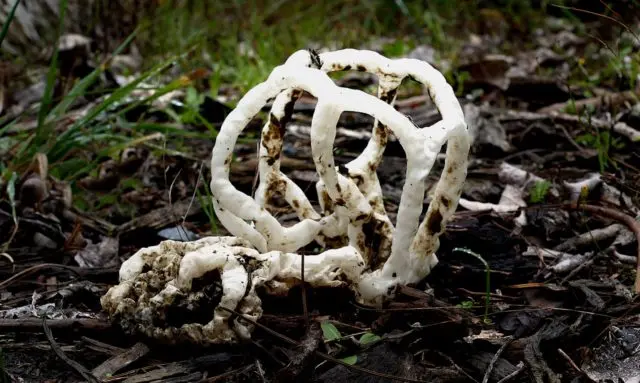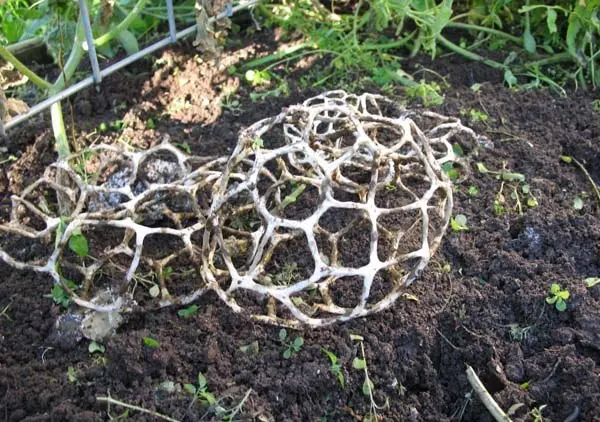Contents
Ileodiction edible or white basketweed is a rare species of mushrooms that is part of the Veselkovye family. The official name is Ileodictyon cibarium. It is a saprophyte, therefore it feeds on dead organic remains extracted from the soil.
Where do ileodictyons grow?
This species is native to Australia and New Zealand, although it has been recorded in Chile. Introduced to England and Africa.
Grows directly on soil or forest floor. It does not have a pronounced period of active growth, since, under favorable conditions, it can appear at any time of the year in the tropics and subtropics. It grows singly, but experts admit the possibility of meeting a group of mushrooms under the condition of high humidity and temperature within +25 ° C.
Favorable conditions for growth:
- increased soil moisture;
- high organic content;
- temperature not less than +25°C;
- low light levels throughout the day.
What do ileodictyons look like?

As the ileodiction edible grows, it changes its shape. Initially, the fungus is a light-colored egg with a thin membrane, 7 cm in diameter, which is attached to the soil with mycelium strands. When ripe, the shell breaks and a compressed lattice sphere becomes visible under it, which subsequently gradually increases in size. Its diameter reaches from 5 to 25 cm. The number of cells of the fruiting body ranges from 10 to 30 pcs. All of them are interconnected by lumpy bridges 1-2 cm wide, without thickening at the junctions.
The upper surface of the fruiting body has a white tint and is covered with a thick gelatinous shell and a layer of peridium. On the reverse side there is an olive-brown coating of spore-bearing mucus. When ripe, the upper part of the fungus can detach from the base and move through the forest. This feature allows the ileodictyon edible to expand its distribution area.
Smooth spores have the shape of an ellipse, their size is 4,5-6 x 1,5-2,5 microns.
Is it possible to eat ileodictions edible
Like other species of the Veselkovye family, ileodictyon edible can only be eaten at an early stage of development, when its shape resembles an egg. In the future, it cannot be used for food, since it exudes an unpleasant smell of rot, for which it received its unspoken name – a smelly grate.
Such a specific aroma appears in specimens with mature spores on the inner shell of the fruiting body. This is a kind of bait for insects, thanks to which the spores subsequently spread over long distances.
False doubles
According to external signs, the edible ileodiction is very similar to the red lattice (clathrus). The main difference between the latter is the pink-red color of the fruiting body, which appears as the mushroom ripens. In addition, there is a dense jagged fringe on each connecting bridge. This is the only species of the Veselkovye family that can be found on the territory of Our Country. Due to its small number, it is listed in the Red Book, so it is strictly forbidden to pluck it.

Clathrus red grows in deciduous forests, but sometimes it can be found in mixed plantings. This species is inedible, but its color and pronounced unpleasant odor are unlikely to make anyone want to try it.
Also, the white basket maker is similar in structure to the graceful ileodictyon (Ileodictyon gracile). But in the latter, the lattice jumpers are much thinner, and the size of the cells is smaller. Therefore, their number can reach 40 pieces during the ripening period of the fungus. This species can also be eaten at the stage of egg formation, until a characteristic unpleasant odor appears, inherent in many species of the Veselkovye family.

Conclusion
The edible ileodictyon is of particular interest to specialists, since its development process and the structure of the fruiting body are unique.
To preserve this species, attempts are being made to introduce it in greenhouses around the world. This makes it possible to significantly expand the geography of distribution.









